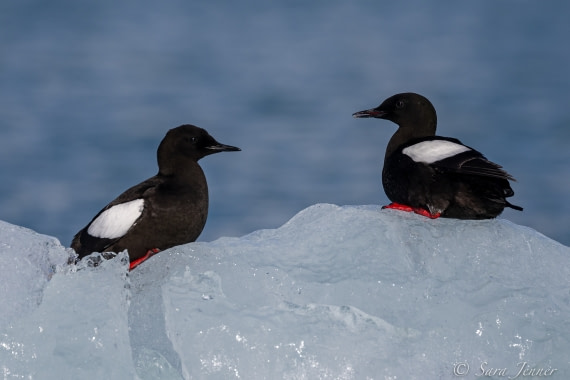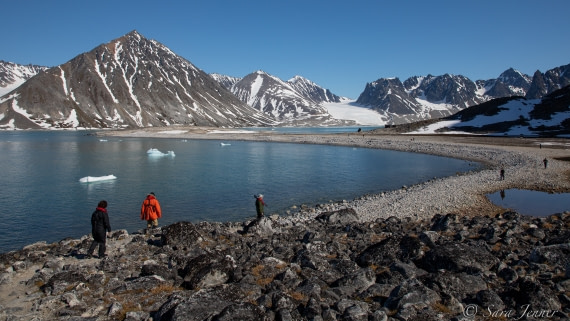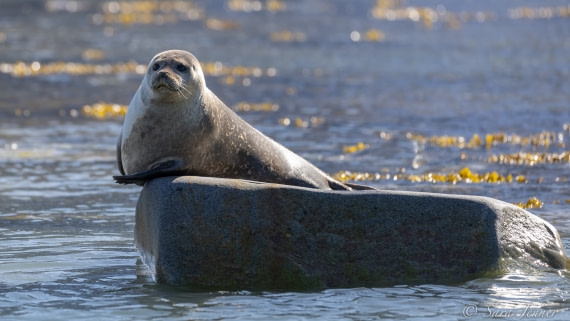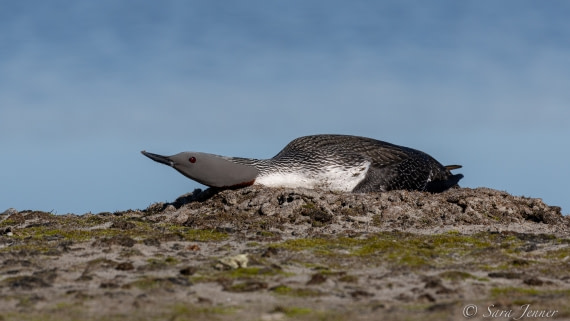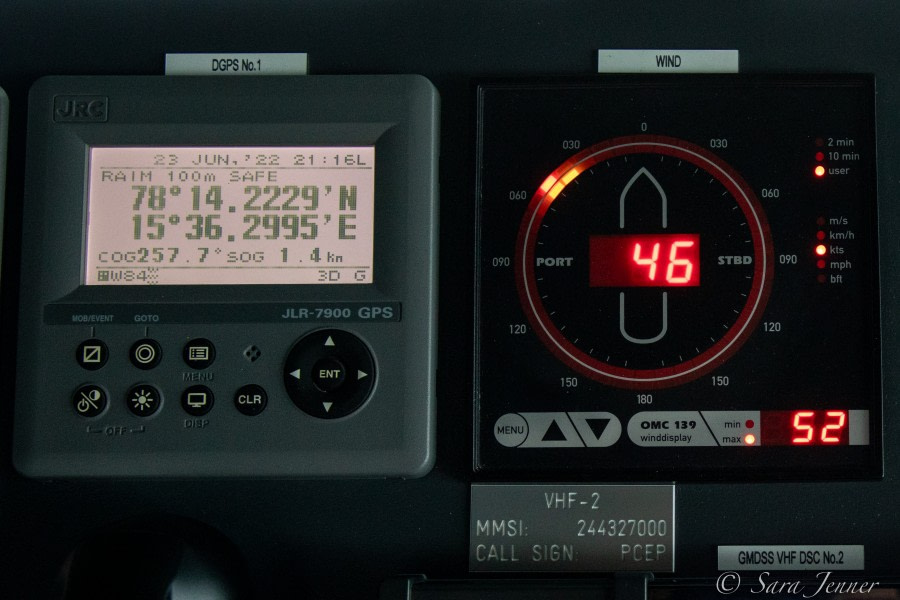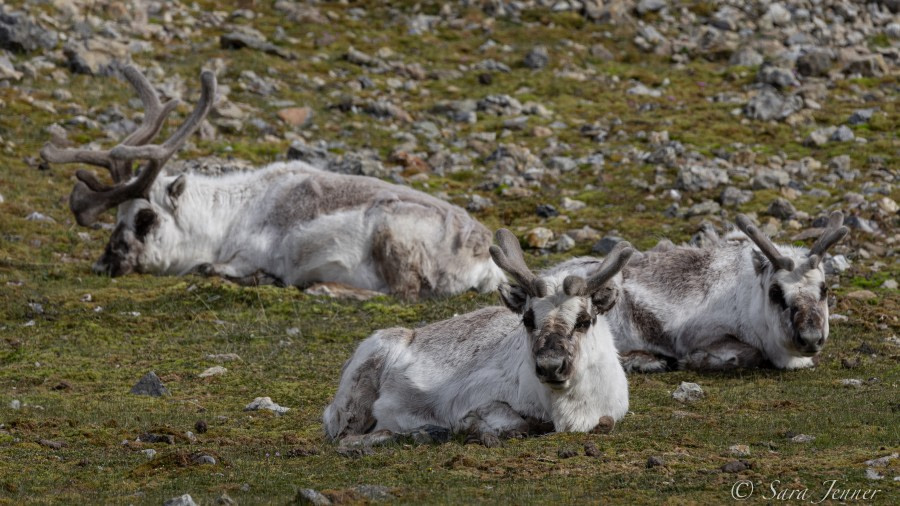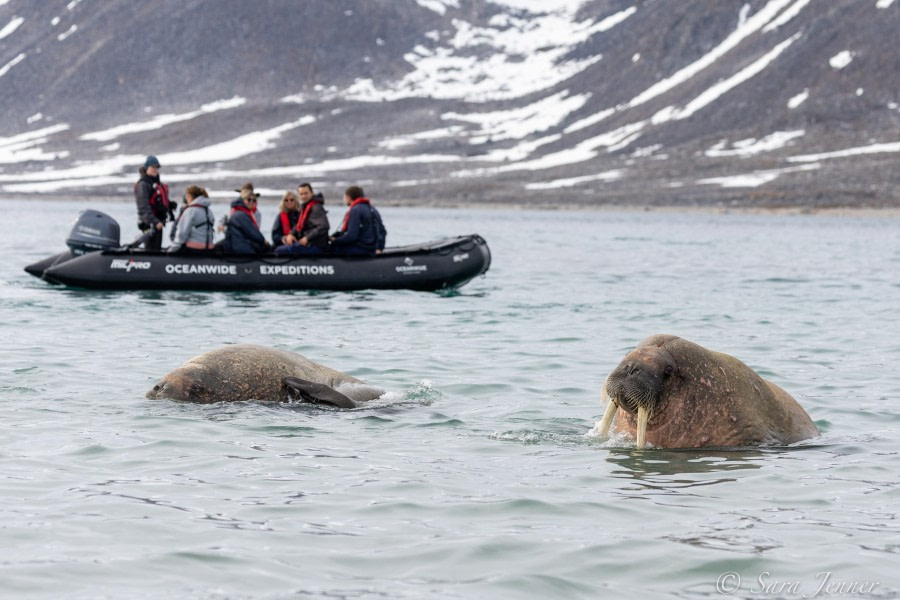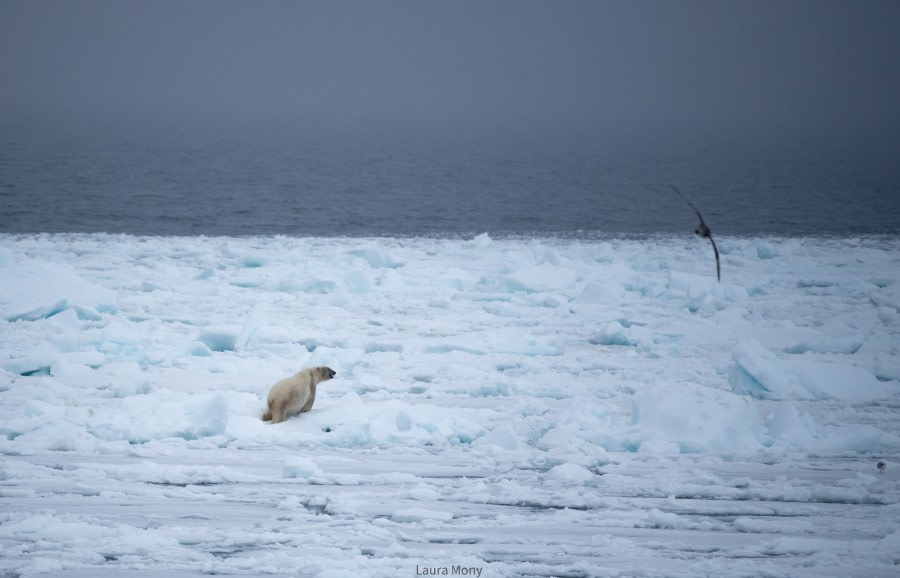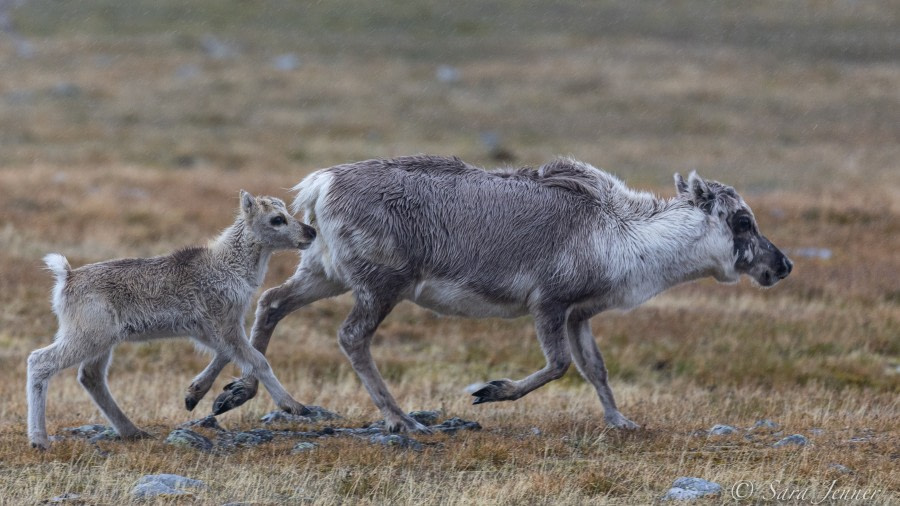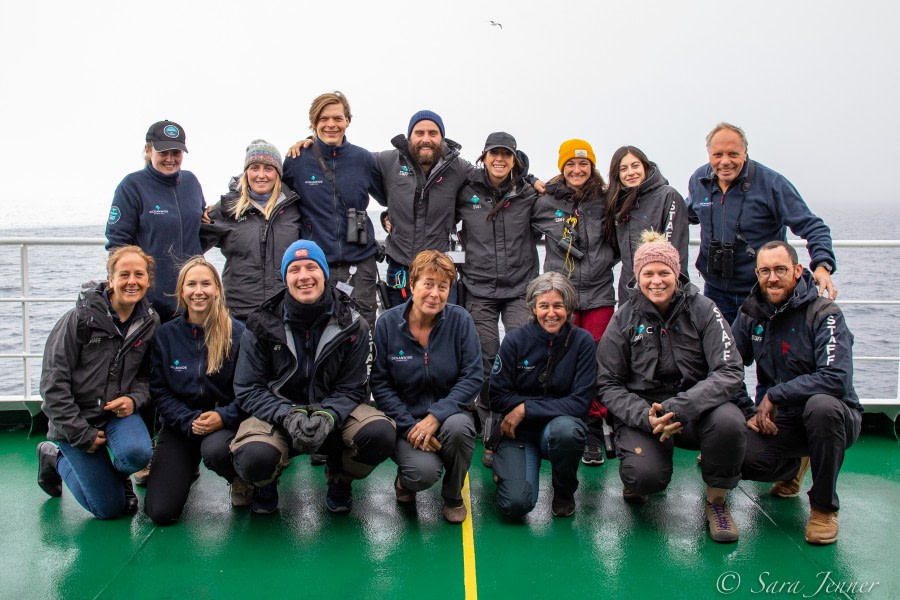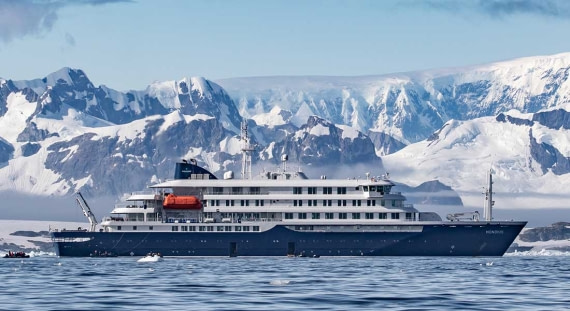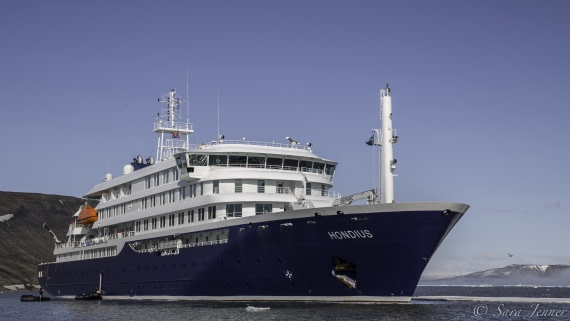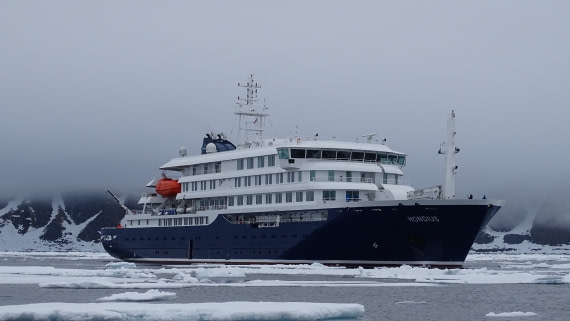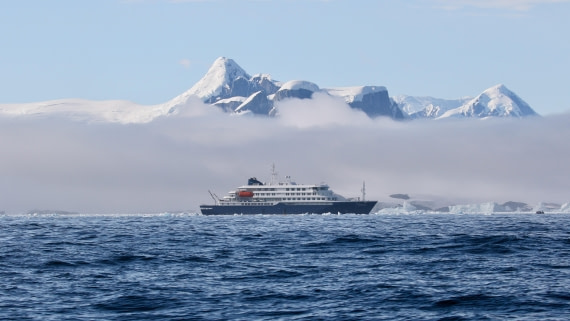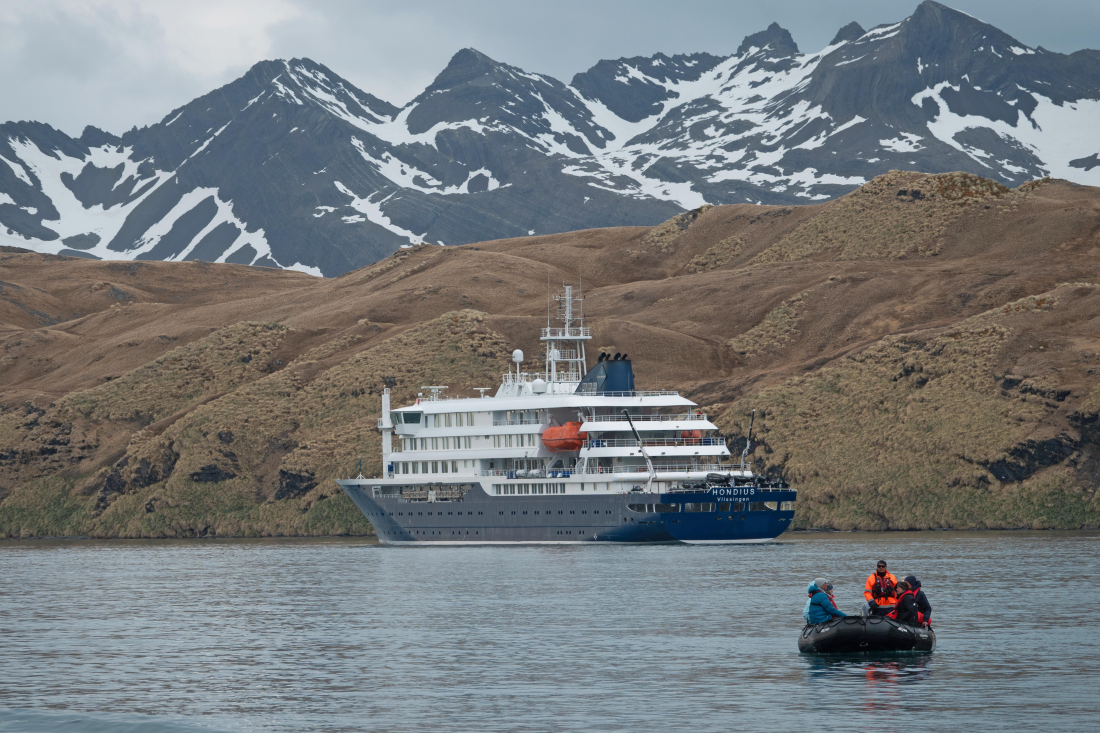| Fecha: |
24.06.2022 |
| Posición: |
78°16'.7 N, 015°25'.6 E |
| Viento: |
ESS 6 |
| Clima: |
Nublado |
| Temperatura del Aire: |
+2 |
El equipo de expedición estaba a la espera a las 5:45 de la mañana, se bajaron las zodiacs y el personal se dirigió a recibir a los huéspedes mientras el Hondius permanecía anclado en alta mar. Poco después de las 7 de la mañana, todos los huéspedes y su equipaje estaban a bordo. A pesar de embarcar un día más tarde de lo previsto y de tener que madrugar, todo el mundo estaba de buen humor y emocionado por comenzar por fin su expedición al Ártico La primera prioridad, tras el embarque, era desayunar y tener un poco de tiempo para instalarse en los camarotes y deshacer las maletas. Después de esto, más tarde por la mañana, la Jefa de Expedición, Florence (Flo), y el Director del Hotel, William, dieron la sesión informativa introductoria, a continuación, el Oficial Jefe, Matei, comenzó la sesión informativa obligatoria sobre la seguridad del buque. Sara, Jefa Adjunta de Expedición, hizo una presentación sobre la AECO (Asociación de Operadores de Cruceros de Expedición al Ártico) para informar a los visitantes sobre el comportamiento correcto con el medio ambiente, las personas y la fauna del Ártico. Esta información era muy importante, por supuesto, pero cuando un invitado gritó que había visto una ballena desde la ventana de la sala de observación de babor, decir que todo el mundo estaba distraído es quedarse corto Una vez que el animal, identificado como un Rorcual aliblanco, desapareció, ¡se restableció el orden! AEL George dio la última sesión informativa sobre las operaciones en zodiac y la seguridad que sería útil más tarde para nuestras actividades de la tarde, llegar a tierra para explorar.
El lugar donde desembarcaríamos por la tarde era Skansbukta, llamado así por la cercana montaña Skansen (palabra noruega que significa "inclinado" y hace referencia a la forma de la amplia meseta que corona la montaña). Se trata de un lugar fantástico lleno de interés, desde magníficas vistas de Renos hasta una gran variedad de vida vegetal, pasando por fascinantes rasgos históricos. Un ferrocarril retorcido y oxidado, restos de explotaciones mineras de Anhidrita, versión desecada del Yeso, (que funcionó de 1918 a 1930 por la Dalen Portland Cement Works), y un pequeño barco naufragado eran elementos de importancia en este lugar. Además, había una cabaña de trampero, construida a principios del siglo XX, pero bien conservada y todavía en uso por los lugareños hoy en día. En cuanto a la flora, se observaron avens de montaña, brezo ártico, saxifraga moñuda, saxifraga colgante, saxifraga de las nieves, ellesmerel, lousewort lanudo, lousewort velludo, hierba blanca pálida, ranúnculo azul, saxifraga de hojas de halcón, saxifraga dorada septentrional y acedera de montaña. Las imponentes montañas que rodean la zona de aterrizaje son un espectáculo impresionante y albergan un gran número de aves marinas nidificantes. Al final de la tarde, los invitados disfrutaron regresando a Hondius a través de los acantilados donde anidan las aves marinas. Todo el mundo disfrutó con el vuelo cercano de aves como el Fulmar boreal, el Charrán ártico y la gaviota tridáctila. A muchos les encantó ver numerosos Frailecillos atlánticos, ¡un ave muy solicitada y querida! Después de esto, volvimos a bordo para el cóctel del capitán, con una copa de "burbujas", reuniéndonos con nuestro capitán Artur Iakovlev en la sala de observación, escuchando los resúmenes de algunos miembros del personal de la expedición y charlando entre nosotros sobre nuestro día. Nos preguntábamos qué emociones nos aguardarían mañana
